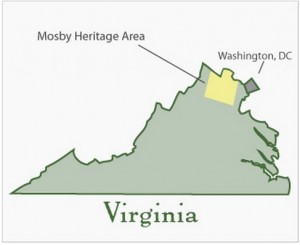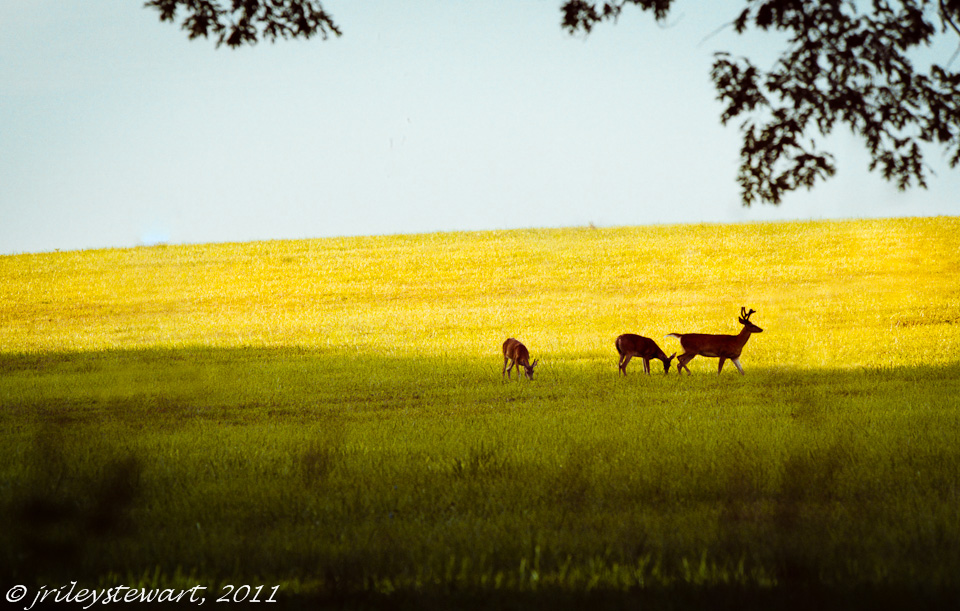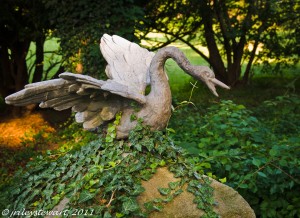Wherever you live, I’ll bet dollars to donuts that at some point a visitor has asked you “..what’s there to see around here?” After you tell them about the most famous “sight” around, they invariably ask you “Have you been there?” And chances are, you have to say “no.” For some reason, Americans will go out of their way to visit places that require a long drive or short flight. We often overlook those nearby sights that are literally filled with tourists this time of year, all of whom have made long drives or short flights to get there!
 Since April 2011, I’ve been doing pro-bono photography for a local not-for-profit organization, the Mosby Heritage Area Association (http://www.mosbyheritagearea.org/). This Association promotes the natural and cultural heritage of the Virginia piedmont located in Loudoun County, where I live, and surrounding counties. This has been a boatload of fun, but more than that, it’s encouraged me to spend alot of time exploring parts of Virginia close to my home in Leesburg, but that I had never really explored before.
Since April 2011, I’ve been doing pro-bono photography for a local not-for-profit organization, the Mosby Heritage Area Association (http://www.mosbyheritagearea.org/). This Association promotes the natural and cultural heritage of the Virginia piedmont located in Loudoun County, where I live, and surrounding counties. This has been a boatload of fun, but more than that, it’s encouraged me to spend alot of time exploring parts of Virginia close to my home in Leesburg, but that I had never really explored before.
High on a typical American photographer’s wish list is to attend workshops at drop-dead gorgeous places like Yosemite, Yellowstone, Grand Canyon, the Tetons, Death Valley, anywhere in the Utah Mountains, Great Smoky Mountains, Appalachia, and the coasts along of the Atlantic or Pacific Oceans. Notice something? For most of us, each of these places require a long drive or a short (sometimes not) flight!
The northern Virginia Piedmont is largely rural and agricultural. It has constantly rolling hills, plentiful rivers and streams, hardwood and pine mixed forests, historical architecture, and lots of animals- domestic and wild. And twice a day– on most days– it has beautiful sunrises and sunsets! I bet it’s pretty typical of areas close to your own home. Since I like taking landscape photographs, this kind of terrain is ideal as it offers variety to my camera without a lot of complexity. I’m not crazy about complex scenes.

I mentioned sunrises and sunsets before. These are my preferred times of the day to photograph landscapes (and they should be yours too). The quality of light is just awesome when the sun is up and within a couple of hours of the horizon. For example, I captured the image above of the deer grazing on Piedmont grasses about 2 hours before sunset. At these times of the day, wild animals are moving around and more visible, the deep shadows provide greater depth in the scene, and the lower intensity of light is more suited to capture by camera. Even when not shooting with a camera, driving around the countryside at or near sunrise and sunset will give you views you’ll never see at mid-day.

As you explore an area close to home more fully, you’ll begin to notice its enduring (and endearing) character. On my recent trips in the Virginia Piedmont, specifically along a 7 mile stretch of US Route 50 west of Middleburg, VA, I noticed something I’d seen nowhere else in Virginia. Many of the farms in this area are large, and entrances are marked with stone gateways. What amazed me was the variety and number of ornaments placed on top of these gateways, which I found fascinating: both from a photographic perspective and from a human perspective. Clearly, some these ornaments are new, but many predate the American Civil War. I began purposefully looking for swans, foxes, eagles, pineapples, roosters, and other pieces of statuary set atop farm gate posts. At some point, I want to research how and why this small area developed this unique character, and that research will encourage me to return time and time again. I’m sure I haven’t discovered them all, yet.
So let me encourage you to get out and explore the sights close to home. Unlike more distant destinations, you can return time after time easily and really get to know the area. And don’t forget your camera!
You can view more images of my ventures into the Virginia piedmont at Virginia Piedmont Collection
Best regards,
Jim
